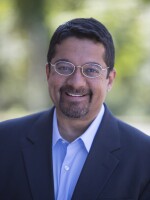AILSA CHANG, HOST:
At some point in our lives, many of us realize that the way we hear our own voice isn't the way others hear us. This is something I relate to very well. And this disconnect has consequences. It shapes how we see ourselves and how others see us. NPR's social science correspondent Shankar Vedantam looks at the relationship between our voices and our identities.
SHANKAR VEDANTAM, BYLINE: In 2013, surgeons gave Jacki Kirk a new set of lungs. It was her second lung transplant. She had been diagnosed with a condition that made it hard for her body to distribute oxygen.
JACKI KIRK: I had the surgery in January of 2013, and I was asleep still for another month and a half.
VEDANTAM: When she woke up, her surgery was successful - except for one important thing.
KIRK: I couldn't speak (laughter). I couldn't speak.
VEDANTAM: During the operation, a ventilator tube damaged her vocal cords. Kirk slowly regained the ability to speak, but the voice that emerged from her didn't feel like her voice. That led to a change in her personality.
KIRK: I feel less confident. I'm aware of how people might perceive me. You know, I have tons of scars all over my body, and that that plays on my confidence as well. But in public life, people can't see those scars. And I feel like my voice is that, you know, that scar they can hear, you know. It's this signal.
VEDANTAM: Voices convey so much more than information. They communicate feelings, temperament, personality. For more than two centuries, scientists have been trying to incorporate the psychological insight into their work to recreate the human voice. All the way back in 1939, Homer Dudley unveiled an organ-like machine he called a Voder. It worked using special keys and a foot pedal, and it fascinated people at the World's Fair in New York.
(SOUNDBITE OF ARCHIVED RECORDING)
UNIDENTIFIED PERSON #1: Helen (ph), would you have the Voder say, she saw me?
UNIDENTIFIED PERSON #2: She saw me.
UNIDENTIFIED PERSON #1: That sounded awfully flat. How about a little expression? Say the sentence and answer to these questions. Who saw you?
UNIDENTIFIED PERSON #2: She saw me.
UNIDENTIFIED PERSON #1: Whom did she see?
UNIDENTIFIED PERSON #2: She saw me.
UNIDENTIFIED PERSON #1: Well, did she see you or hear you?
UNIDENTIFIED PERSON #2: She saw me.
VEDANTAM: Over the next 40 years, speech scientists continued to study the human voice. Research by MIT's Dennis Klatt in the 1980s paved the way for some of the synthetic voices we are familiar with today, many of them used in assistive communication devices.
(SOUNDBITE OF MONTAGE)
BEAUTIFUL BETTY: I am Beautiful Betty, the standard female voice.
HUGE HARRY: I am Huge Harry, a very large...
KIT THE KID: My name is Kit the Kid, and I am about...
PERFECT PAUL: I am the standard male voice, Perfect Paul.
VEDANTAM: Speech technology has come a long way over the years, but in many ways, synthetic voices still sound synthetic. They don't convey all the emotional information that's packed into the human voice.
RUPAL PATEL: Voice is identity, right? Voice is about who you are. Our voice signals how old we are. Our voice signals our gender. Our voice signals, you know, things about our personality.
VEDANTAM: This is Northeastern University speech scientist Rupal Patel. In 2014, she launched a company called VocaliD. Her goal was to build synthetic speech that captured the richness and personality of natural speech. Patel uses machine learning and other artificial intelligence technologies to create personalized voices. Sometimes these are developed for people whose voices are impaired by disorders. Other times, the technology can be used to preserve a person's existing voice.
PATEL: These could be individuals who are losing their voice to degenerative conditions. So slowly their voice is changing, such as ALS or Parkinson's disease. And then those who - the trauma is actually far more pronounced for individuals with something like head and neck cancer, where they learn that they're going to have their voice box removed within a couple of weeks.
VEDANTAM: Lonnie Blanchard confronted this traumatic news in 2018. Doctors diagnosed him with cancer and said they had to remove his tongue. Before his surgery, Patel worked with him to build a database of sound samples. He recorded sentences that gave Patel and her colleagues raw material for a new custom-built synthetic voice.
LONNIE BLANCHARD: I wish we could get acquainted. I'm going to be a teacher when I grow up.
VEDANTAM: Blanchard now uses his personalized voice through an iPad.
BLANCHARD: Once you close your eyes and let your mind relax, it doesn't take long to escape to the beautiful beach.
VEDANTAM: Patel says, even though voice synthesis technology has made major strides in recent years, there's still a long way to go.
PATEL: Ideally, in the future, these decisions are made by the end user themselves - like, oh, I actually want that to be - sound a little breathier. I'd love that to sound a little bit more confident. And, I mean, how does that translate to the acoustics? We don't quite know yet. But that's actually, I think, where - when we can finally give the control of what the voice sounds like to the individual, I mean, that's the Holy Grail.
VEDANTAM: Shankar Vedantam, NPR News.
CHANG: And you can find more of Shankar's reporting on the podcast he hosts. It's called Hidden Brain. Transcript provided by NPR, Copyright NPR.


